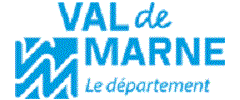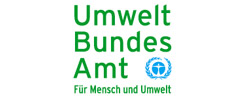Ecotourism in Garla Mare
A report on small-scale ecotourism on the borders of the Danube. Opportunities and chances for the villagers in Romanian Garla Mare.
16.08.2005 |Margriet Samwel
Background
WECF carried out a MATRA project "Safe Drinking Water" in Garla Mare, financed by the Dutch Ministry of Foreign affairs from 2001-2002. One of the results of that project is, that two local environmental NGO“s GEO SAN and the women NGO FVC are founded. For the rural development of the area of Garla Mare, located in the Southwest of Romania, on the border of the Danube, the idea of the exploration of tourism raise among the citizens.Are there possibilities of ecoourism in Garla Mare?
In the scope of the one-year project "Sustainable development for All", which will be carried out in cooperation with the local NGOs in Garla Mare, WECF commissioned a team of 6 students of the University of Wageningen to carry out an investigation on the possibilities of small-scale, ecotourism in Garla Mare and to write a report on their findings.The report of the students contains background information covering the infrastructure situation, environmental features, history of the area and many other aspects for having a good understanding of the possibilities for small-scale, ecotourism. In addition to the background information gathered through literature research, the project team carried out field research including interviews and observations to produce a current impression of the village. Meanwhile, the project team obtained some more information and support by making contacts mainly with people who are involved in previous projects about Gārla Mare.
The field work was done in six days by the two project members, Andreas Luiten and Kivilcim Ilhan. The remaining project members stayed in the Netherlands and focused on gathering and analyzing the background information.
In the light of the above mentioned information, the report consists of five chapters including an introduction, background information, findings due to analysis of the field research, conclusion and recommendations which is the final part of the report.
Conclusion
Considering all gathered information, the project team is convinced that tourism is possible in Gārla Mare.Gārla Mare has some strength which fit well into this type of tourism. As is shown in the paragraph about the definitions of varying types of tourism, nature and the local culture play an important role in this kind of tourism.
Small-scale, ecotourism is considered possible for two reasons. The first is that Gārla Mare can be very attractive to tourists. It is located on the border of the Danube, which is unique for the region. Together with the island, this gives a beautiful landscape and good recreation possibilities. On top of that, the surroundings of Gārla Mare are beautiful and provide some nice views, for example to the hills of Bulgaria, the shepherds with their flocks, the river, the fields and wetlands. Also the traditional way of living which takes place in the village is very nice to observe and participate in. This provides the tourists with a feeling of really being out of every-day life and therefore gives them plenty of opportunities to relax. All these aspects give possibilities to organize activities to tourists. It is well possible to make use of the surroundings and the traditional activities to attract tourists. The tourists will like to see it and also participate if this is possible. Examples of activities are mentioned in the former chapter.
The second reason why tourism is considered possible is because of the attitude of the local people. In the field research, it became clear that most people in Gārla Mare are in favour of the development of tourism and are willing to actively participate in it. The people are very hospitable, to Romanians as well as to foreigners. This is considered to be a basic need to develop tourism, and is thus provided. It implies a small-scale approach, taking into consideration the size of Gārla Mare and its current potential to receive tourists.
Tourism can only be developed if certain conditions are met. For example there have to be good accommodations and the road to Gārla Mare has to be well signed out. For further conditions, we refer to our next section with the recommendations.
Download the full report on Tourism in Garla Mare (6,6 MB, doc).


































